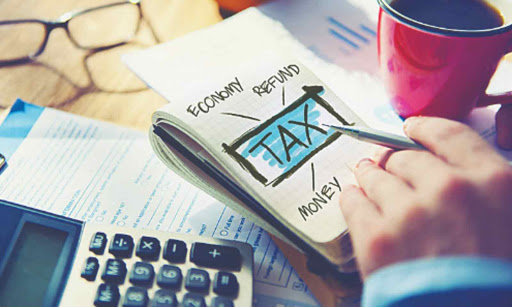
While doing your tax planning for FY2019-20, it is important to know which tax slab your income falls in. The slab rate in which your income will fall is the rate at which your last rupee of income will be taxed.
As your income level increases, income at different levels or in different bands will be taxed at different rates which are called the slab rates.
These are the current income tax slabs:
|
S.no |
Income slabs |
Income tax rates applicable to each slab |
|
A) |
Up to Rs 2.5 lakh |
Nil |
|
B) |
Rs 2,50,001 to Rs 5,00,000 |
5% of (Total income minus Rs 2,50,000) |
|
C) |
Rs 5,00,001 to Rs 10,00,000 |
Rs 12,500 + 20% of (Total income minus Rs 5,00,000) |
|
D) |
Above Rs 10,00,001 |
Rs 1,12,500 + 30% of (Total income minus Rs 10,00,000) |
Income tax slabs applicable to resident individuals below the age of 60 years for FY2019-20. Surcharge is applicable from income above Rs 50 lakh. Health and Education cess at rate of 4% will be added to the income tax payable in all cases. Rebate of Rs 12,500 is available for individuals having net taxable income of up to Rs 5 lakh under section 87A.
Suppose your gross total income is Rs 15 lakh in FY2019-20. From the table of income tax slab rates mentioned above, the first Rs 2.5 lakh from your income of Rs 15 lakh will be exempted from tax. This is because as per current income tax rates, there is no tax on income up to Rs 2.5 lakh as mentioned in point (a).
Post this, the income left in your hands (Rs 15 lakh - Rs 2.5 lakh) which is still chargeable to tax is Rs 12.5 lakh. From point (b), the next Rs 2.5 lakh (i.e., Rs 5 lakh minus the Rs 2.5 lakh which is tax exempt) will be taxed at 5 per cent. Therefore, at this stage, your income tax liability will be Rs 12, 500 (5 per cent of Rs 2.5 lakh).
Calculation of income tax for gross total income of Rs 15 lakh
|
Particulars |
Income (Rs)
|
Tax amount (Rs) |
|
Gross total income |
15,00,000 |
- |
|
Income taxable up to Rs 2,50,000 |
2,50,000 |
0 |
|
Income left |
12,50,000 |
- |
|
Income taxable from Rs 2.5 lakh up to Rs 5 lakh |
2,50,000 |
@ 5% =12,500 |
|
Income left |
10,00,000 |
- |
|
Income taxable from Rs 5 lakh up to Rs 10 lakh |
5,00,000 |
@20%=1,00,000 |
|
Income left |
5,00,000 |
- |
|
Income taxable above 10 lakh (Rs 15 lakh – Rs 10 lakh) |
5,00,000 |
@30% =1,50,000 |
|
Total income tax liability |
- |
262500 |
|
Cess at 4% on total income tax payable (i.e. on Rs 2,62,500) |
|
10500 |
|
Final income tax liability (inclusive of cess) |
|
273000 |
The income which is still chargeable to tax is Rs 10 lakh (Rs 12.5 lakh minus Rs 2.5 lakh which is taxed at 5%). From point (c), out of Rs 10 lakh, the next Rs 5 lakh (i.e. Rs 10 lakh minus Rs 5 lakh) of your income will be taxed at the rate of 20 per cent. The tax liability here comes out to be Rs 1 lakh (20 per cent of Rs 5 lakh).
At this stage, your total tax liability will become Rs 1,12,500 (Rs 1 lakh plus Rs 12, 500). However, remember you income still needs to be taxed at the last rupee. Thus, till point (c), out of gross total income of Rs 15 lakh, income up to Rs 10 lakh is only offered to tax. The income which is now left chargeable to tax is Rs 5 lakh (Rs 15 lakh minus Rs 10 lakh).
From point (d), this income of Rs 5 lakh will be taxed at 30 per cent. The income tax liability in this case will be Rs 1.5 lakh (30 per cent of Rs 5 lakh). Therefore, your highest income slab is taxed at 30per cent. Normally, the income tax slab in which the last rupee of your income is taxed is considered to be the income tax slab in which you fall.
Infact, any income above Rs 10 lakh will be taxed at 30per cent. There will also be a surcharge on income tax applied at different levels of income when the income exceeds Rs 50 lakh.
From point (a), (b), (c) and (d) in the example above, your total income tax liability comes to be Rs 2,62,500. The cess at the rate of 4 per cent will be added to Rs 2,62,500. The cess amount would be Rs 10,500 (4 per cent of Rs 2,62,500).
The final tax liability payable by you will be Rs 2,73,000 (inclusive of cess).
How to lower the tax outgo
Under the Income-tax Act, 1961, various tax exemptions and deductions are available that can help an individual tax payer lower his tax outgo. These include: tax exemption on house rent allowance (HRA), leave travel allowance, interest received from post office savings account etc. Similarly, individuals can claim maximum deduction of Rs 1.5 lakh under section 80C by investing in specified tax-saving instruments.
Premium paid on health insurance for yourself, family and parents can help you save tax under section 80D and deduction of up to Rs 10,000 can also be claimed under section 80TTA (by individuals less than 60 years old) on interest received in savings account held with bank and/or post office.